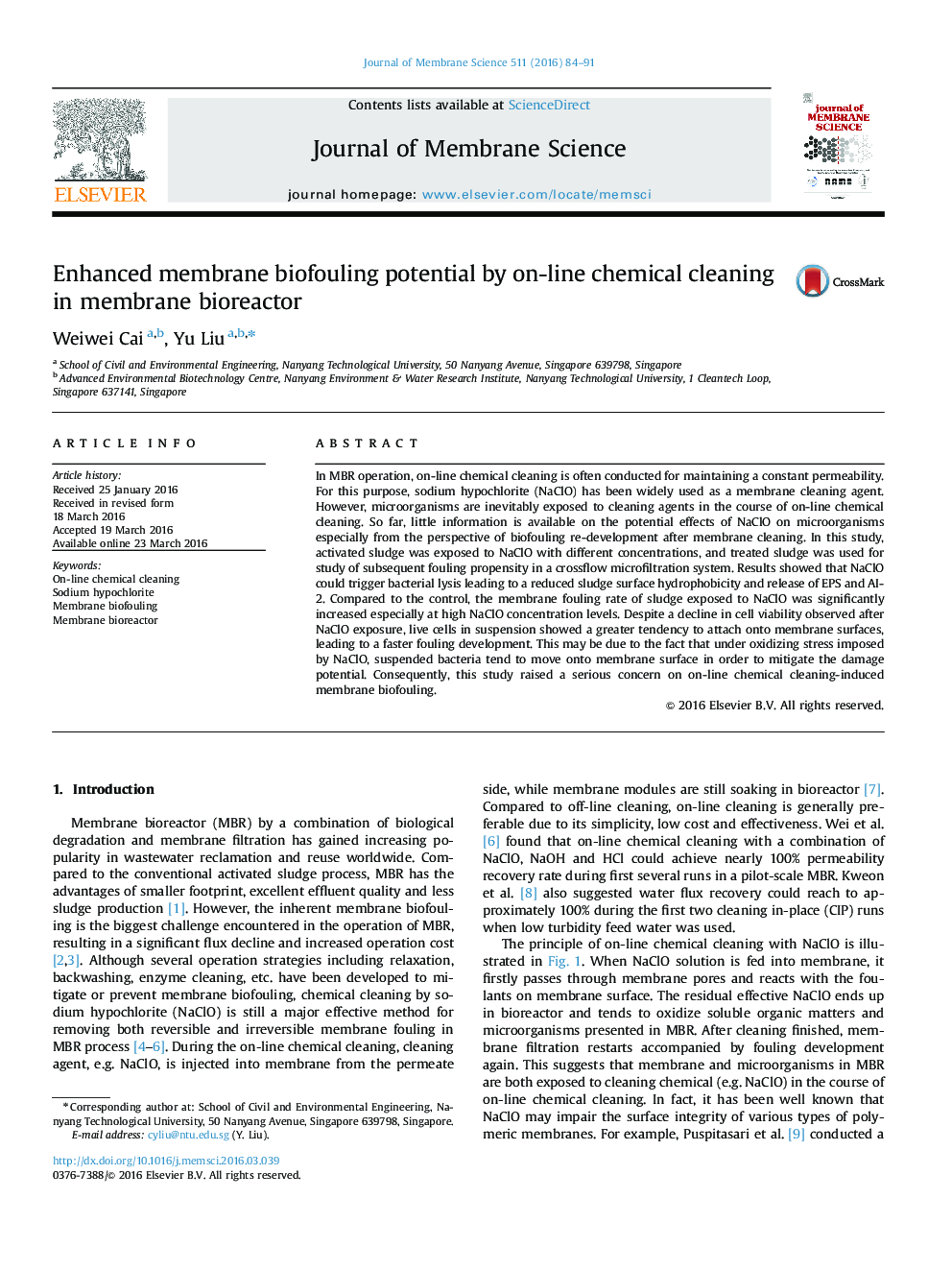| Article ID | Journal | Published Year | Pages | File Type |
|---|---|---|---|---|
| 632409 | Journal of Membrane Science | 2016 | 8 Pages |
•NaClO triggered cell lysis leading to substantial extracellular substances released.•Bacteria survived after exposed to NaClO increasingly attach onto membrane surface.•Membrane biofouling potential was enhanced by on-line chemical cleaning with NaClO.•This study offers new insights into on-line chemical cleaning of membranes in MBR.
In MBR operation, on-line chemical cleaning is often conducted for maintaining a constant permeability. For this purpose, sodium hypochlorite (NaClO) has been widely used as a membrane cleaning agent. However, microorganisms are inevitably exposed to cleaning agents in the course of on-line chemical cleaning. So far, little information is available on the potential effects of NaClO on microorganisms especially from the perspective of biofouling re-development after membrane cleaning. In this study, activated sludge was exposed to NaClO with different concentrations, and treated sludge was used for study of subsequent fouling propensity in a crossflow microfiltration system. Results showed that NaClO could trigger bacterial lysis leading to a reduced sludge surface hydrophobicity and release of EPS and AI-2. Compared to the control, the membrane fouling rate of sludge exposed to NaClO was significantly increased especially at high NaClO concentration levels. Despite a decline in cell viability observed after NaClO exposure, live cells in suspension showed a greater tendency to attach onto membrane surfaces, leading to a faster fouling development. This may be due to the fact that under oxidizing stress imposed by NaClO, suspended bacteria tend to move onto membrane surface in order to mitigate the damage potential. Consequently, this study raised a serious concern on on-line chemical cleaning-induced membrane biofouling.
